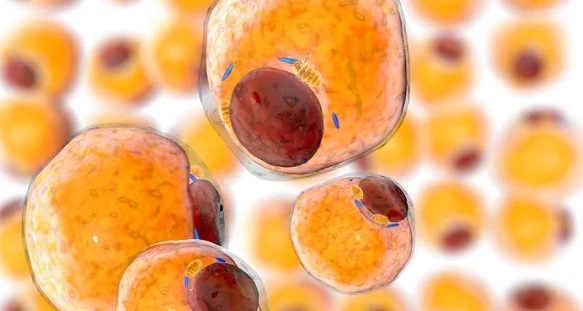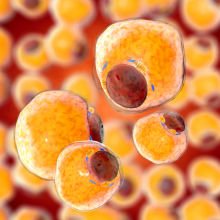What is Stem Cell Therapy?
Stem cell therapy injects stem cells into an area of injury, such as an arthritic knee, to help initiate a natural healing process and create new healthy cells. Stem cell therapy offers a natural, minimally invasive treatment alternative to traditional surgery, often with less recovery time.
Stem cells are naturally occurring cells in the body but are different from most other types of cells because they are multipotent, which means they can develop (“differentiate”) into a wide variety of specialized cell types including muscle, tendon and cartilage.
Stem cells are categorized as either embryonic (derived from a fetus) or as adult (found in the human body). Adult stem cells grow in abundance in bone marrow and fat, but can also be found in smaller quantities in most tissue.
Stem cells naturally release anti-inflammatory elements that help decrease inflammation and pain that occurs in damaged tissue. The stem cells also signal existing cells to begin producing cartilage. All of these functions work to decrease pain, increase joint function and heal worn out or damaged cartilage.
Stem cells are not critical to the body’s natural healing process. But by harnessing their ability and targeting them to specific areas, they provide a promising treatment for a diverse range of injuries and conditions.
Stem Cell Therapy Procedure
To obtain the cells an orthopaedic surgeon will apply local anesthesia to the area overlying the lower abdominal region before inserting a needle into the fat in that area . Fat is withdrawn and prepared in a machine that is specifically designed to concentrate stem cells.
Once the cells are isolated, the area receiving injections is then sterilized and numbed. Using ultrasound guidance to confirm accurate placement, a surgeon injects the stem cell solution into the damaged area of the body.
Recovery time is minimal and varies from patient to patient.
After the initial procedure, patients report improvement in pain and function. In most cases, only one treatment is needed to see benefits. These improvements seem to reach their peak two months after the procedure and can typically last for several years. Additional or prior PRP (Platelet Rich Plasma) therapy may be required as deemed by the surgeon, depending on the case.
Stem Cell Therapy for Orthopaedics
Physicians are developing these orthopaedic, or musculoskeletal, stem cell procedures to treat arthritic joints and breaks regenerate cartilage in arthritic joints and heal ligaments and tendon pathologies. The regenerative potential of stem cells has also created a flurry of research and clinical applications aimed at treating osteoarthritis, rheumatoid arthritis and spinal cord injury.
Such treatments could serve as better alternatives for adults suffering from those types of damaged tissue or cartilage conditions than the current treatment options available, which are :
- Use donated tissue to replace lost or damaged tissue.
- Treat symptoms such as pain and inflammation with medication.
- Surgery to replace joints or repair damaged areas of the body.
- Slow, natural healing.
Each individual’s response to treatment is different, and complete pain relief or full functionality cannot be guaranteed. Many studies demonstrate the efficacy of stem cell therapy in improving pain relief and increasing function after treatment. Various studies underway also demonstrate evidence of cartilage repair in both humans and animals.
The main risks of stem cell therapy are the same of any minimally invasive procedure, including risk of bleeding, infection and some pain during and after the procedure. Working with a qualified physician can minimize these risks.
- Stem cell therapy is a minimally invasive procedure that uses a needle to inject stem cells into damaged tissue to initiate healthy cell growth.
- Stem cells occur naturally in the body and contain anti-inflammatory and regenerative properties that can treat any condition that damages tissue, such as arthritis , cartilage degeneration and damage, tendinopathies and host of musculoskeletal issues.
- Patients typically require only one treatment to improve function and decrease pain in the damaged area, and benefits typically last years.
- Stem cell therapy is approved by the Food and Drug Administration and is generally very safe.


